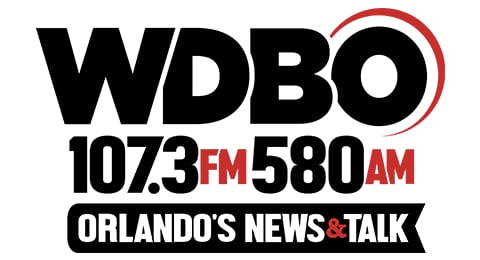State lawmakers across the U.S. are pushing to use more taxpayer dollars to pay for private school tuitions and homeschooling expenses even as they try to figure out how to budget in a time of economic uncertainty.
A $1 billion-per-year voucher program the Texas Legislature sent to the governor last week and a longshot push in Congress to expand vouchers nationally, including to states that have rejected them, are focusing attention on the issue.
In states that already have programs to pay private education costs for most students, the expense has quickly gobbled up more of their budgets as revenue growth has slowed or stalled. Besides Texas, Tennessee adopted a program this year, and North Dakota gave serious consideration to one before a veto last week likely ended its prospects this year.
States are required to produce annual spending plans that don't exceed what they bring in. With pandemic-era federal money mostly phased out, voucher opponents fear the programs will come at the expense of other priorities, including public schools.
“Even if they’re being funded by separate revenue sources, it can feel like school choice programs and public schools are competing for the same slice of an increasingly smaller pie,” said Page Forrest, who analyzes state finances at the nonpartisan think tank Pew.
Until five years ago, the boldest school choice programs were limited to lower-income and special-needs students. More recently, scholarships and state-funded savings accounts open to most or all families have been catching on, especially in Republican-controlled states.
This approach costs far more, at least in the short term. That is partly because studies of the efforts in several states have found most of the first students to enroll were already attending private schools, and not receiving taxpayer subsidies at all before the choice programs' launch.
In the coming school year, voucher programs are expected to cost Florida taxpayers almost $3.9 billion, or about $1 in every $13 from the state’s general revenue fund. In Arizona, it’s nearly 5% of the general budget.
An analysis by The Associated Press found the costs in Iowa, Ohio and Oklahoma are over 3% of state general spending this year, or are projected to be in the coming budget year.
Spending is a smaller portion of the budget in states where the scholarship programs are still ramping up. Those include Arkansas, Indiana, North Carolina, Utah and West Virginia.
A flood of campaign money from voucher proponents has been a key factor in convincing previously resistant Republican lawmakers to endorse school choice plans, particularly as advocates have called for more school options coming out of the COVID pandemic.
Programs were approved last year in Alabama and Louisiana and this year in Tennessee, where Republican Gov. Bill Lee has said the $447 million program will be available for the upcoming school year.
A New Hampshire bill raising income limits on an existing program has been moving through the legislature.
In Texas on Thursday, lawmakers sent the governor a bill that would allot more than $10,000 per year for students in accredited private schools. The cost would be capped at $1 billion in the 2026-27 school year, which is a little over 1% of the annual state general funding. But by 2030, a legislative analysis found, it could cost $4.5 billion a year. That could partially be offset by a little over $800 million in savings, because there would be fewer public school students to subsidize.
The Texas House also approved a nearly $8 billion boost to the public education system, which advocates say doesn't cover extra expenses due to inflation.
In energy-dependent North Dakota, GOP Gov. Kelly Armstrong vetoed an education savings account program, saying it wouldn't expand options for all students and there were implementation problems. He has since said the concept remains a priority for him.
Erin Oban, an organizer with North Dakotans for Public Schools, said the program's costs and unknowns about the state's financial outlook make it a bad time to start a voucher program.
"I think it would be a very long-term challenge to fund something in the short term you think might be a good idea or that somehow we can afford right now,” she said.
Congressional Republicans are looking to extend an assortment of tax cuts passed in President Donald Trump's first term, plus enact new tax cuts for overtime, tips and Social Security benefits. Proponents of the school choice credit will face stiff competition when it comes to getting included in that mix.
In Ohio, under a budget proposed by House Republicans, vouchers would see a bigger funding increase than public schools starting in July 2026. The plan, which was passed this month, also calls for a way for the state to take back some property tax money already collected by school districts.
Democratic state Rep. Bride Rose Sweeney said she doesn’t have a problem with vouchers, so long as public schools are fully funded. But she says the budget plan falls short of that.
It also would continue to increase the amount available for scholarships to private schools, including for the first time making a portion of them available to institutions that operate without any state oversight.
“Ninety percent of Ohio’s kids are still in the public schools,” Sweeney said. “They are increasing still more into vouchers while still not giving the public schools what they need — even though that’s where the bulk of the money is coming from.”
Rachel Brady, a mother of four in Wake Forest, North Carolina, was a leader in a successful push last year for lawmakers to fully fund scholarships after one of her children, and thousands of others, were put on a waiting list after the initial allocation was exhausted.
Lawmakers should look to cut costs elsewhere if they have to in order to keep the programs going, she said.
North Carolina Gov. Josh Stein — like Arizona's Katie Hobbs, another Democratic governor — has proposed scaling back the scholarships. But there is no indication the GOP-controlled legislatures will pump the brakes in either state.
The budget advanced this month by the North Carolina House includes scholarship funding and a smaller raise for public school teachers than Stein proposed.
“This is a great investment in the future of our kids,” Brady said. “It’s giving them what they need to be successful in life. I can’t think of a better way to invest in the future of our state.”
___
Associated Press writers Collin Binkley, Jack Dura, Kevin Freking and Nadia Lathan contributed.
Copyright 2025 The Associated Press. All rights reserved. This material may not be published, broadcast, rewritten or redistributed without permission.










